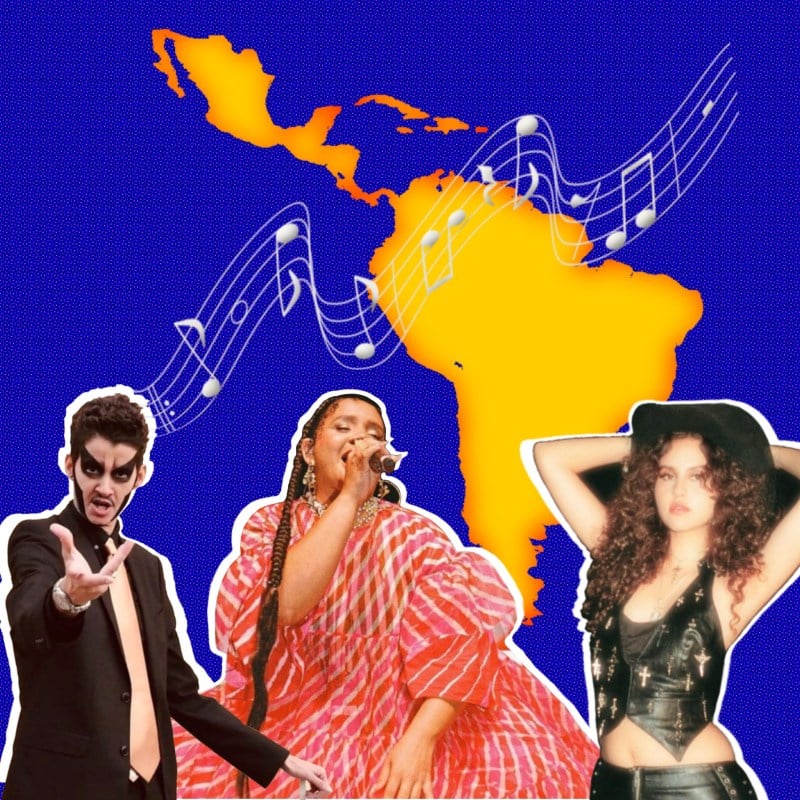You’ve most likely heard “telepatía” by Kali Uchis. Does “Pepas” ring a bell? And did you think you could go the rest of your life without being reminded of “Despacito”?
With breakout stars like Bad Bunny, El Alfa and Kali Uchis drawing international attention to reggaeton, dembow and related genres, Latin music is set to generate over $1 billion in the U.S. alone in 2022. The growing number of collaborations between artists of Latin American and U.S. origin is yet another testament to the expansion of this Latin sphere of influence. Indeed, this paradigm seems to be reflected even around campus, from packed stadium concerts to themed parties.
Blinding commercial success aside, however, it is easy to forget about the roots of the Latin music genres widely enjoyed today. The dance music styles of reggaeton and dembow were created by Black and brown Latines in Caribbean urban city centers. The reggaeton scene started in inner cities of Puerto Rico as an underground youth culture, bearing direct musical influence from Panamanian renditions of Jamaican reggae. Artists from Puerto Rican cities like Bayamón and Carolina — where my father grew up — would record in their garage and then distribute cassette tapes on the streets.
The fast pace and layered rhythms of dembow were similarly inspired by dancehall artists like Panama’s El General. The genre was born in the Dominican Republic, with obvious influences from other Dominican musical styles like merengue and even Brazilian funk.
For Hispanic Heritage Month this year, dear reader, you may want to dive deeper into the vast world of Latin music! To that end, this list is my love letter to the creative musical spirit that flourished across Latin America before reggaetoneros were dominating anglophone music awards.
YENDRY
Born in the Dominican Republic and raised in Italy, YENDRY creates music that embodies multiculturality. Caribbean reggaeton and dembow, European electronica and West African afrobeats come together in songs like “Nena” of her viral COLORS show or infectious dance tune “KI-KI.” YENDRY’s silky Spanish-language vocals are sure to impress fans across genre lines.
Estevie
This 19-year-old Mexican-American cumbia singer impresses with a haunting, captivating sound on standout tracks like “La Cumbia Del Cucuy” and “Cumbia Loca.” The traditional cumbia accordion trills almost teasingly through these songs. Estevie seems to embody a villainess spinning, circling, surveying her prey.She also leverages the grito, a Mexican vocal expression, in the background to build this effect. Synth and other techno influences are subtle, but contribute to the disembodied feeling.
Villano Antillano
At the forefront of the trans and queer revolution in the Caribbean urban music scene is Villana Santiago Pacheco, who hails from Bayamón, Puerto Rico. Aside from her rapidfire flow — as seen on her Bzrp Music Session — Villano Antillano is notable for breaking boundaries within the historically misogynistic and homophobic genre of reggaeton. Her musical clapback at homophobic reggaetonero Anuel AA “Pato Hasta La Muerte” also puts on display her precision in songwriting.
Lido Pimienta
Layered textures and dreamy vocals abound in “Miss Colombia,” the second studio album by this Afro-Indigenous Canadian-Colombian singer. The project’s leading single, “Nada,” uses haunting vocals and bright, rhythmic music to sonically evoke an enchanted garden. From sound to visuals, “Miss Colombia” is a nod to the artist’s Wayuu and Afro-Latinx heritage. Bringing together the traditional and modern in her flowery electro-cumbia tunes, Pimienta’s sound is sure to bring a smile to your face.
Rita Indiana
Genre-bending Dominican musician and author Rita Indiana makes high-energy electronic rock tracks that often include references to Latin American politics. Her last album, “Mandinga Times,” was produced by a member of the iconic reggaeton duo Calle 13. Among my favorite moments on the project are the mention of Puerto Rican revolutionary leader Pedro Albizu Campos on “The Heist” and the tribute to the tragic disappearance of 42 leftist Mexican students on “Pa Ayotzinapa.”
Boza
Panamanian reggaeton artist Boza produces the classic bounding beats associated with the Caribbean on tracks such as “En La Luna” and “Hecha Pa’ Mi,” which earned him national and international attention. Boza’s music career started in prison, where he says he took time to reflect on his future and explore his creativity. Today he is known for his place in the fusion of dancehall, reggaeton and trap (called “canela” in Panama).
Editor’s Note: This article is a review and includes subjective thoughts, opinions and critiques.
